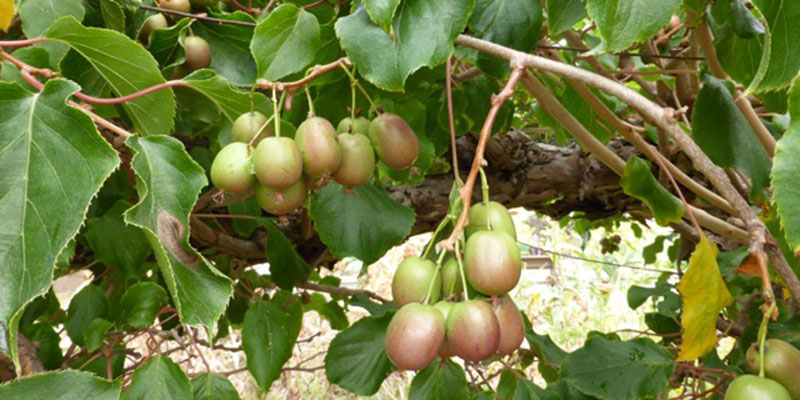
Actinidia arguta
One of the pleasures at UBC Botanical Garden is watching how plants respond to conditions from one year to the next. Variations in autumn colour are usually the result of the availability of late summer sunshine and soil moisture and the more of both of those, the darker will be the colours of the autumn leaves. Sadly, 2016 doesn’t look to be among the best years for autumn colour, but it will be a banner year for fruiting. Fruit-set is a little more complicated in that it first depends on the presence of pollinators (or on favourable winds for wind-pollinated plants). But it also depends on the conditions of the previous year when the flower buds were formed, the weather when the flowers are open and receptive to pollen, and on the conditions experienced by the ripening fruit. And as mentioned, it appears that all of the various factors lined up nicely for a number of plants this year. Besides the more obvious (i.e., more colourful) fruits and berries, which are certainly plentiful this October, UBC Botanical Garden has an enormous array of plants with more or less unremarkable looking fruits. Of course, this doesn’t mean the fruits aren’t remarkable, it’s just that they would never win any beauty contests. In this category is the kiwifruit and its relatives (Actinidia species), and some of these are producing fruit in prodigious quantities this year.
We grow about ten different species of Actinidia both in the Food Garden and around the David C. Lam Asian Garden. Where there are multiple seedlings of the individual species, we generally see fruiting—male and female flowers are borne on separate plants, so the fruits are generally only produced where both male and female plants are present. The actinidia fruit is a true berry, derived from a bottle-shaped ovary in the centre of the female flower. Like the familiar kiwifruit (A. deliciosa), most species have stems, leaves and fruits that are covered in hairs. The rare A. eriantha (woolly actinidia) produces dense, exceptionally soft creamy white hairs all over its egg-shaped fruits, but they are nearly invisible against the white-hairy stems and leaves of this vigorous climber (Kingdon Ward Way & Delavay Trail). Similarly, A. arguta (grape-kiwi, hardy kiwifruit) produces grape-sized berries that ripen from green to bronze, matching, to some degree, the colour of the leaves and later, when the leaves have fallen, the colour of the stems (Food Garden and Maries Trail). Actinidia polygama (Japanese silver-vine) is better known for the white splash-variegated leaves of male plants (and in Japan, for its cat-attracting properties—small sticks are sold as cat-treats in Japanese pet stores), but its small berries are hairless and green on the outside, with delicious orange flesh within (Wharton Trail). Another species, though hailing from the Russian Far East, A. kolomikta (kolomikta vine) is similar but with even showier variegation (white-splashed and pink-tinged). This species is a weak climber (a flopper, really) with delicate white orange-blossom scented flowers in spring and golden-yellow, pecan-sized fruits in the autumn (Delavay Trail & Perny Trail). The largest of the actinidias is A. deliciosa (kiwifruit). The species is Chinese but was first grown commercially for fruit in New Zealand, whence the common name derives. In China, the species is commonly known as míhóu táo (monkey peach). There are individual plants of A. deliciosa in the Asian Garden, Food Garden and on the Arbour.
Submitted by Douglas Justice, Associate Director, Horticulture and Collections, September 27, 2016
